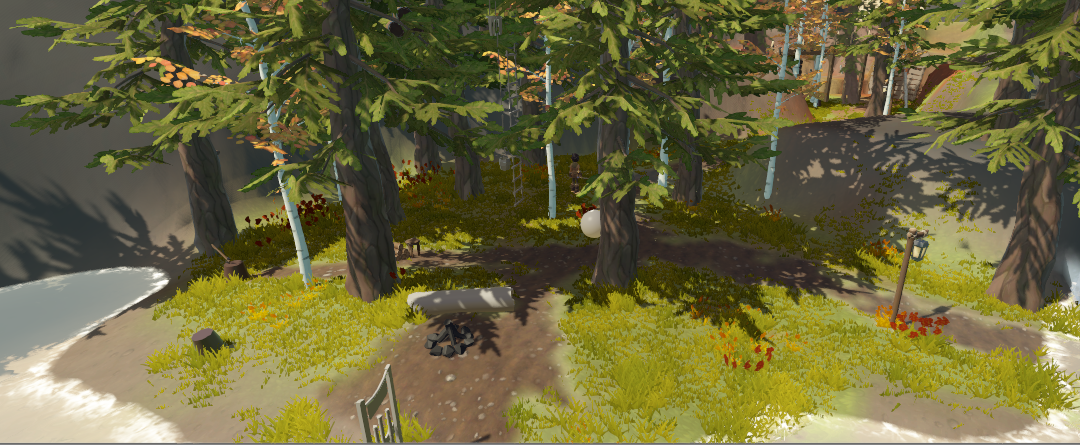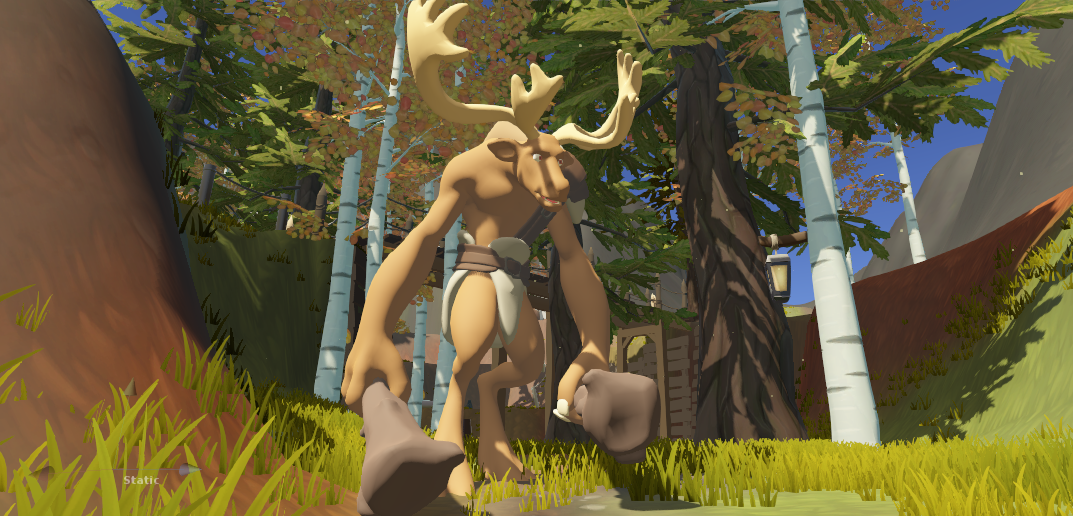This week we wanted to write a little piece about the conceptual backbone of Pine – evolution and continuity. When we started designing and prototyping more than a year ago, we needed to find a way to bring this high-level concept to something playable, something fun. Soon, through the first prototypes of adapting artificial intelligence, we arrived at something bigger, something of a different mindset – and the concept of “macrocosmocentrism” was born.

Although it’s certainly a mouthful (and we’ve tried finding a more apt term, really), its basics are simple: everything in and regarding the game should be designed, developed or produced while keeping in mind that the world and cosmos is a continuous actor.
Stay with us for a second. In most games, the player is the main trigger of events. You enable areas, the rendering of objects, enemy behavior or cutscenes, and generally everything within a small radius around you is logically active. All the space around that – think about other levels, the other side of a mountain, inside buildings – are logically inactive. We defined the terms logical activity space (LAS) and logical inactivity space (LIS) to talk about this more easily, and for every game you could quickly define the logically active elements at any given point.
A quick, tangible example: when Link strolls out of Kakariko Village onto the great plains of Hyrule Field, the field is rather silent and static. Kakariko goes from being in the LAS to the LIS as the player switches levels, and Hyrule field then starts to ‘listen’ to player input. Link runs past a patch of grass and triggers a group of enemies that burst out of the ground and start attacking him. The enemies only focus on Link and only listen to Link’s input.
But what would Hyrule field look like if it were already active when Link was still in Kakariko Village? Using quick computations, one could vastly increase the LAS to other levels or areas, and calculate what would happen if enemies respond to more than the player who is in a certain location. Enemies could be fighting each other or be scouring the fields for food, so that players would find them in unexpected places.
Hence the focus on the macrocosmos. In Pine, an overarching system regulates the entire ecology of the game. Weather, natural cycles, natural events and player input all tie into a highly advanced state machine for enemies. Adding neural network technologies for apt observational capabilities, we found a way to make enemies smarter than ever – or rather, more alive.

They respond to each other and to the world: they have rivals, friends and territories. They have to find food and shelter and have individual feelings of independence, confidence and alertness.
Interesting situations and fun emerges from their extremely advanced behavior, and depth comes from their adaption and evolution. They are a species and will try to survive (according to Charles Darwin’s basic ruleset), so players can expect to be countered with tailored behavior that is ‘procedurally’ designed to keep you from progressing. The challenge is dynamic and adapting, and so is the entire macrocosmos.
This all sounds ambitious, but the point we are trying to make is that it’s not – it’s rather a paradigm shift, a way of thinking about the entire design. With an infinite LAS in mind, we design around the fact that the Cariblins on top of the mountain are as alive right now as the ones before you – and that everything you do has an impact on their rumour-spreading species, their survival and their counter actions.

Lastly, as mentioned, the world is an actor as well. Natural events like earthquakes or storms can vastly disrupt the game’s ecology, or as it is called in theoretical ecology, create a disturbance. Enemies respond to them based on the same vast ruleset they use for everything – finding shelter, food, staying safe and surviving as a species.
They will mobilize, behave a little bit differently or perhaps get stronger, based on the species’ basic statistics and general personality. Within this biosphere, the player is simply one influencing factor with strong abilities to alter the course of evolution indeed.
That last bit is a thematic choice as well. We want Pine to be about humanity, about being human – and certainly about human limitations too. The challenge lies in building an experience that is not frustrating, but in which players embrace their unknowingness.
For us, this is what would make a game about evolution fun, and this is what we are building. We’ll explain the ins and outs in more detail soon, with a blog on the layered enemy design coming up next. If you want to respond to this blog, you can always do that via Facebook, Twitter or email!






Support us in developing Pine! (Read more)
